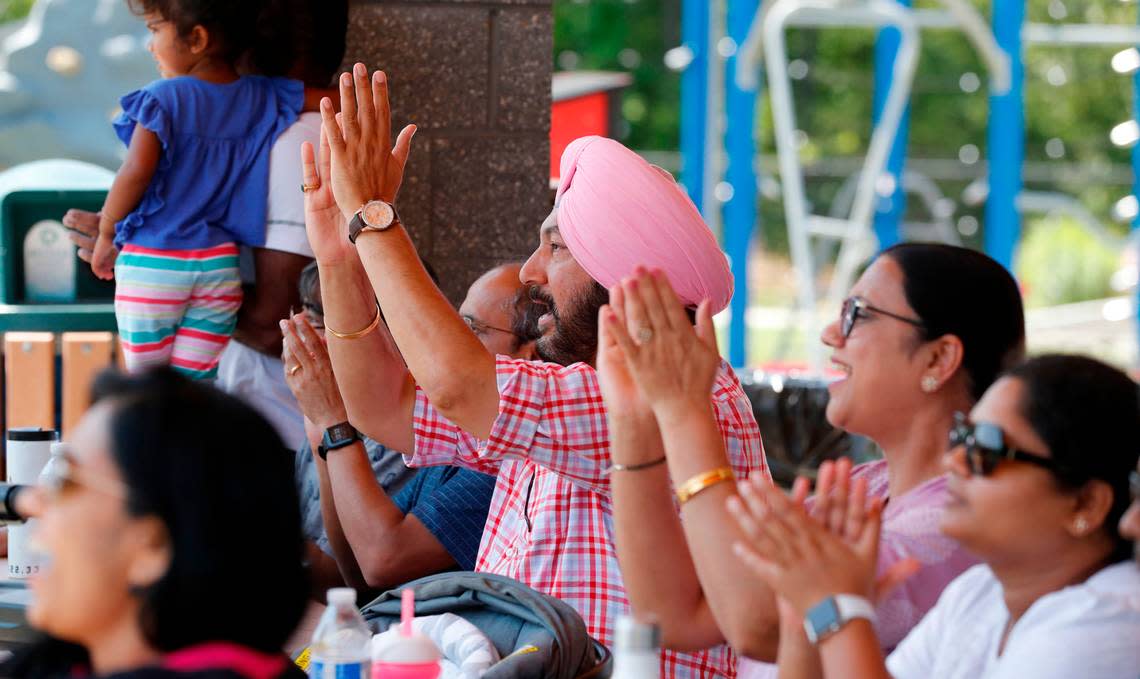By the numbers: Which groups drive population growth in a more diverse North Carolina?

As the ninth largest state in the country with 10.8 million residents, North Carolina’s racial and ethnic profile continues to change.
From 2022 to 2023, the Asian population had the highest growth rate at 5.3% in the state, according to new census data. With nearly 386,000 people, they now make up almost 4% of the state’s population, up from 3% in 2020.
The U.S. Census Bureau defines Asians as people with origins in Central, East, or Southeast Asia, or South Asia. That includes, China, India, Japan and Pakistan, for example.
Wake County had the highest percentage of Asian residents in the state at 9.3%, with about 110,000. In Morrisville, in western Wake, nearly half of the 31,000 residents are Asian or of Asian heritage.
Hispanics and people who describe themselves as multi-racial increased too in the last year at 3.7% and 3.9%, respectively. The Hispanic and Latino population now comprise 11.4% of the state’s population, up from 10.7% in 2020.
The agricultural southeastern NC counties of Duplin and Sampson led the state with the highest percentages of Hispanics, 23.6% and 22.4%, respectively. Mecklenburg County, home to Charlotte, the most populous city in the state, has the largest number of Hispanics at about 186,000.
The number of white non-Hispanics, now about 61% of the population, grew less than one percent from 2022 to 2023. The Black or African-American non-Hispanic population gained one percent, and represents 21% of the state’s population, the same as in 2020.
Changes since 2020
Every ten years, the Census Bureau counts all people living in the country. In between, they produce annual population estimates projected from the latest census count.
These new estimates always include changes in population due to births and deaths and to “net migration,” a count of those moving here from other states and abroad along with how many people move away.
Hispanic and white non-Hispanic people accounted for most of the 400,000-person population increase number wise in North Carolina since 2020, according to the new census data
Hispanics accounted for 30.9% of the growth and white-non-Hispanics made up slightly more at 31.5%.
Black non-Hispanic residents made up 16.5% of the growth, followed by Asian non-Hispanics with 13%.
Is NC still getting older?
Yes, but barely. The median age in NC last year was 39.3, up from 38.9 in 2020 and 38.7 in 2010. The national median age is a bit less at 39.1.
People 65 and older make up 17.6% of the state’s population, up more than a point from 16.4% in 2020.
Nationally, the 65-and-older population grew 9.4% from 2020 to 2023.
North Carolina has two of the five fastest growing metropolitan areas for that age group — Wilmington at 18.4% and Raleigh and Cary at 18.3%.
Brunswick County, on the southeastern NC coast and home to many retirees, is the oldest county in the state with a median age of 56.9. The youngest is Onslow County, home to Camp Lejeune Marine Corps base, at 27.7.
Conversely, the rate dropped slightly for the under age 18 group statewide, from 22.2% in 2020 to 21.6% last year.
County by county
Search the database below to see the changes since 2020 in your county.
